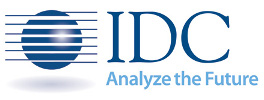Continued robust growth for Wearables, AR/VR Headsets, and Smart Home
Monday, October 4th, 2021
Spend on Emerging Device Categories—including Wearables, AR/VR Headsets, and Smart Home—Will See Continued Robust Growth, According to IDC
NEEDHAM, Mass. — Total value of three emerging categories of products – augmented and virtual reality headsets, smart home devices, and wearables – is expected to reach $369.6 billion by the end of this calendar year and swell to $524.9 billion by the end of 2025 according to new data from International Data Corporation (IDC). Collectively, these products have appeared within the last decade and have firmly established themselves beyond early adopters and into the mass market. Looking ahead, all three of these product categories can anticipate continued growth through a combination of a larger selection of devices, lower price points, and enhanced user experiences.
“Virtual Reality headsets are seeing strong growth in 2021 from both consumer and commercial buyers,” said Tom Mainelli, group vice president for IDC’s Augmented and Virtual Reality team. “We expect VR growth to continue well into the future as more consumer and enterprise use cases present themselves. Today, AR headsets are primarily focused on enterprise use cases, but we do anticipate consumer-focused headsets will gain traction in the later years of our forecast as major technology companies enter the space with new products.”
“The underlying driving force of the smart home and smart office market is services,” said Adam Wright, senior research analyst for IDC’s Smart Home and Office Devices team. “While device elements such as design and reliability are necessary for success, differentiation and margins lie elsewhere. Connected consumer products are accelerating the consolidation of value in services while diminishing the margins in the devices themselves. The breadth, depth, uniqueness, and quality of data sets will increasingly determine the value potential of a smart home vendor, and as device margins are pressured, the role of devices will largely be relegated to vehicles for service delivery.”
“When wearables first arrived on the market, many wondered if these were a passing fad,” said Ramon T. Llamas, research director for IDC’s Wearables Team. “Years later, wearables have earned a spot in consumers’ minds as well on as their bodies, performing a number of functions ranging from health and fitness to communications to multimedia consumption. At the heart of this, wearables make these experiences and many others more convenient for the wearer and continue to attract more first-time users and first-time vendors.”
Product Highlights
Augmented and Virtual Reality will see the fastest value growth in the coming years with the anticipation of new devices coming to market from both established and start-up companies and a warming reception among new users. Enterprise users have moved beyond exploratory and pilot use cases and into broader deployments while a growing number of consumers have demonstrated pent-up demand for robust gaming solutions. While the headset itself will be the site of data consumption and attention, keep an eye on how the experience evolves from consuming and interacting with content on the device to connecting with other devices and systems to serve seamless experiences at work and at home.
Smart Home Consumer interest in smart home solutions is largely driven by promises of enhanced entertainment, convenience, safety, and security. But inhibiting the market’s growth for the foreseeable future are consumer concerns about security and privacy, price sensitivities to upfront and ongoing costs of devices and services, and the economic uncertainty stemming from the volatility of labor and financial markets across the world. The United States will represent the lion’s share of global value for the coming years and will grow at a compound annual growth rate (CAGR) of 6.2% over the five-year forecast period, reaching more than $126.3 billion in 2025. Likewise, networked entertainment devices like smart TVs and streaming players will drive the bulk of value, reaching more than $229 billion in 2025 at a five-year CAGR of 7.3%.
Wearables’ value will increase with the continued popularity of earwear and smartwatches. Driving the earwear market higher is a combination of strong end-user demand, a constant replacement cycle, and a long range of devices from emerging and established companies alike. Meanwhile, the smartwatch market will grow as the health and fitness experience evolves to provide prescriptive data as well as descriptive data to uncover new actionable insights.
Product Value 2021 & 2025, and 2021-2025 CAGR for Smart Home, Wearables, and AR/VR
2021 2025 Five-Year Product Value ($M) Value ($M) CAGR ----------------------------- ---------- ---------- --------- Smart Home $289,933 $400,364 10.1% Wearables $77,780 $106,350 9.9% Augmented and Virtual Reality $1,930 $18,177 67.9% Total $369,643 $524,891 10.8%
Source: IDC Worldwide Quarterly AR/VR, Smart Home, and Wearables Trackers, Sept. 2021
IDC Tracker products provide accurate and timely market size, vendor share, and forecasts for hundreds of technology markets from more than 100 countries around the globe. Using proprietary tools and research processes, IDC’s Trackers are updated on a semiannual, quarterly, and monthly basis. Tracker results are delivered to clients in user-friendly Excel deliverables and on-line query tools.
Latest News
- Barb to start reporting TV-set viewing of YouTube channels
- SAT FILM selects multi-DRM from CryptoGuard
- Qvest and ARABSAT to launch OTT streaming platform
- ArabyAds & LG Ad Solutions partner with TVekstra in Turkey
- Freeview NZ satellite TV service to move to Koreasat 6
- Comscore expands YouTube CTV measurement internationally
